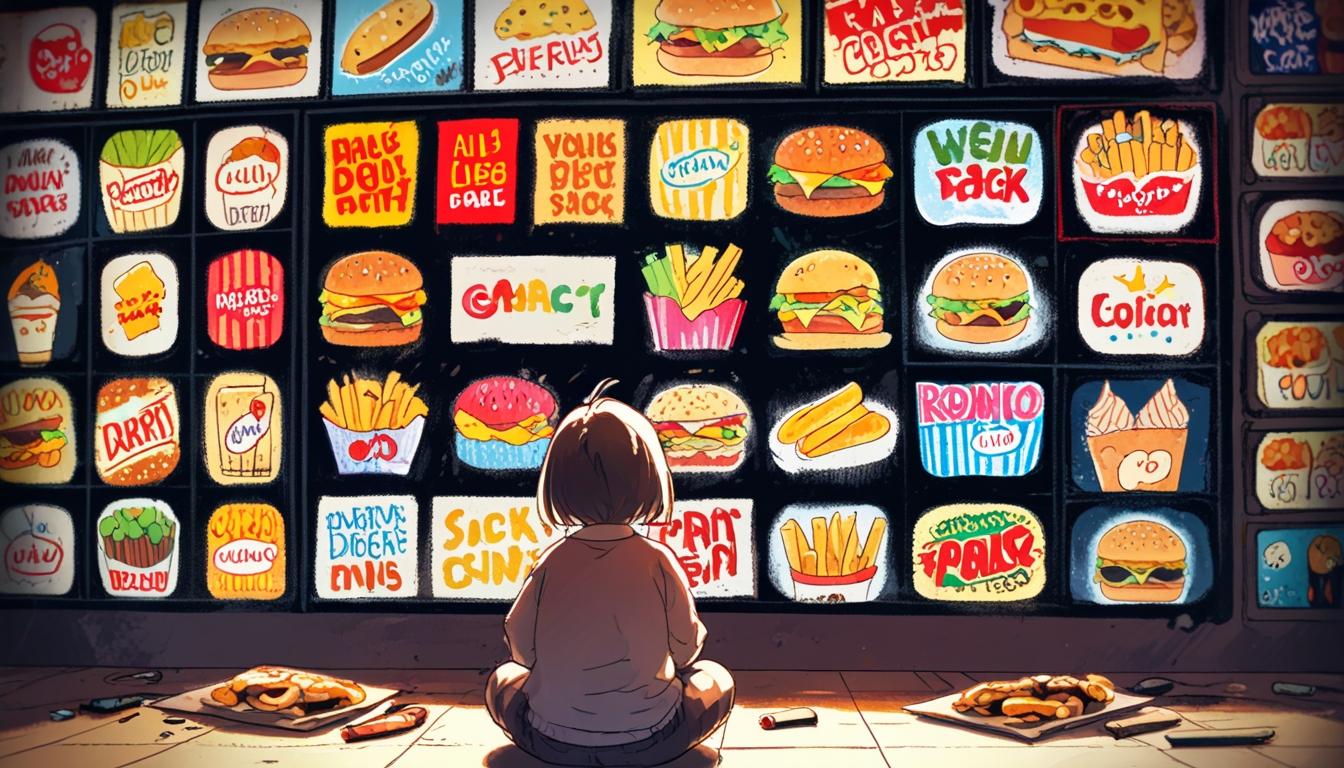Recent research has highlighted a concerning trend: even brief exposure to junk food advertising can lead children to consume significantly more calories later in the day. A study involving 240 children aged between seven and fifteen, conducted across schools in Merseyside, found that just five minutes of viewing junk food ads resulted in an average increase of 130 calories consumed, regardless of whether the advertisements showed specific food items or merely brand logos. This phenomenon demonstrates the powerful influence of branding on young minds, who, even before starting school, can identify and display preferences for well-known fast food outlets such as McDonald’s and KFC.
The findings were presented by Professor Emma Boyland, a leading figure in food marketing and child health at Liverpool University, at the European Obesity Congress in Malaga, Spain. Boyland stated, “This is the first study to show that brand-only food advertising affects what children eat… that type of advertising, which is becoming more frequent, does affect children’s food intake.” This assertion underscores a troubling loophole in the UK government’s upcoming advertising restrictions, set to take effect in October, which aim to ban junk food adverts on television before 9pm. Experts argue that brand-only advertising, likely exempt from these new regulations, poses a significant risk to children’s health, as companies can still promote their logos and branding extensively.
Katharine Jenner, director of the Obesity Health Alliance, expressed her concerns about the persistence of these loopholes. She noted that while new regulations may limit unhealthy food advertising on television and online, brands will still find ways to connect with young audiences through billboards and public transport platforms. This has particular implications for children who are already living with obesity, making them especially susceptible to marketing strategies that encourage unhealthy eating habits.
Additional research corroborates these findings. Studies from institutions such as the University of Wollongong and Yale University have shown that children exposed to food advertising on television can consume nearly 50 extra calories each day, leading to potential weight gain over time. Similarly, findings from a study indicate a link between junk food ads and increased snacking rates among both children and adults, suggesting that the implications of these marketing techniques extend beyond the immediate context.
Efforts to combat childhood obesity in the UK highlight a stark reality: one in five children is classified as obese by Year 6. Initiatives such as the Chefs in Schools programme aim to provide nutritious meals, yet they coexist with a landscape where unhealthy food marketing remains prevalent. Despite plans for regulatory changes targeting junk food advertising, substantial work remains to address the depths of this public health issue adequately.
Dr Helen Stewart, an officer for health improvement at the Royal College of Paediatrics and Child Health, emphasised the need for robust measures to tackle the childhood obesity crisis. She stated, “Reducing children's exposure to unhealthy food advertising is a crucial step in curbing rising obesity levels. Every child should be given the chance to grow up healthy and happy.” As the government prepares to enforce advertising restrictions, the challenge lies in ensuring that these measures effectively shield children from the influence of powerful branding and marketing tactics.
The government's approach, outlined by a spokesperson, acknowledges the necessity of addressing junk food marketing targeted at children while promoting healthier food options. They suggest that by allowing companies to market healthier alternatives, they can start shifting the focus toward better dietary habits among children, ultimately aiming to alleviate the burdens of obesity on public health services.
However, unless the government addresses existing loopholes that allow for extensive branding without accountability, the battle against childhood obesity may be jeopardised. The urgency of implementing a comprehensive strategy that curtails not only explicit junk food marketing but also the subtle yet pervasive influence of brand imagery on children is essential to fostering a healthier future generation.
Reference Map
- Paragraphs 1, 2, 3, 4, 5, 6, 7
- Paragraph 3
- Paragraphs 4, 5
- Paragraphs 5, 6
- Paragraph 5
- Paragraphs 3, 5
- Paragraph 6
Source: Noah Wire Services
